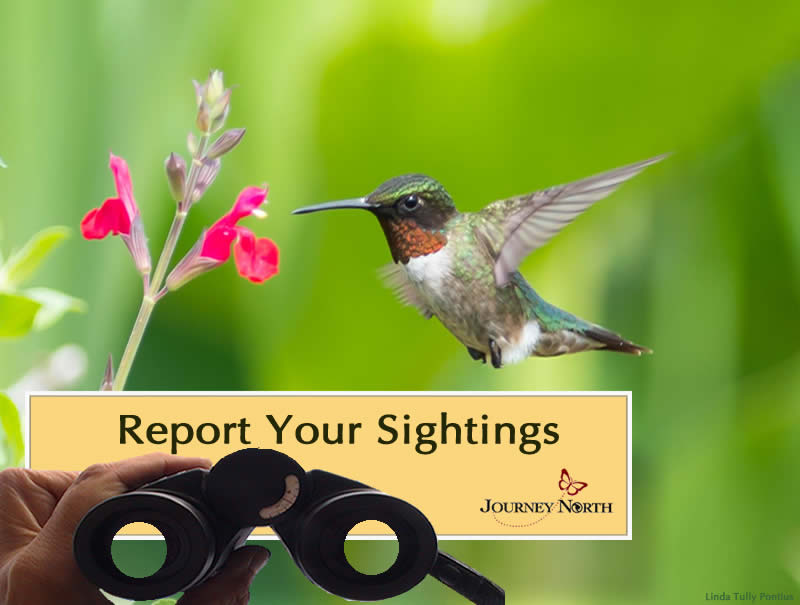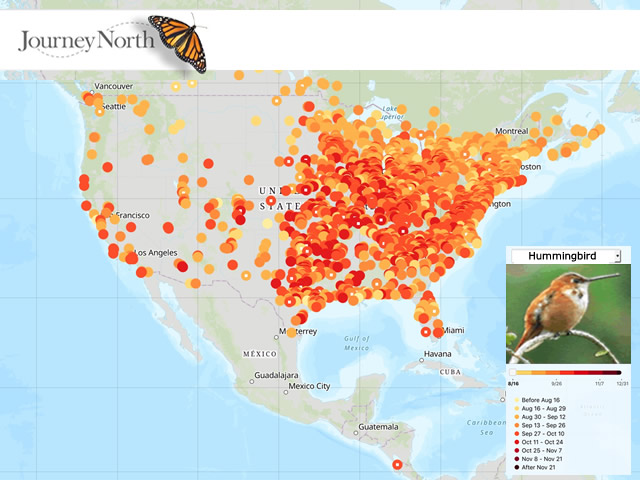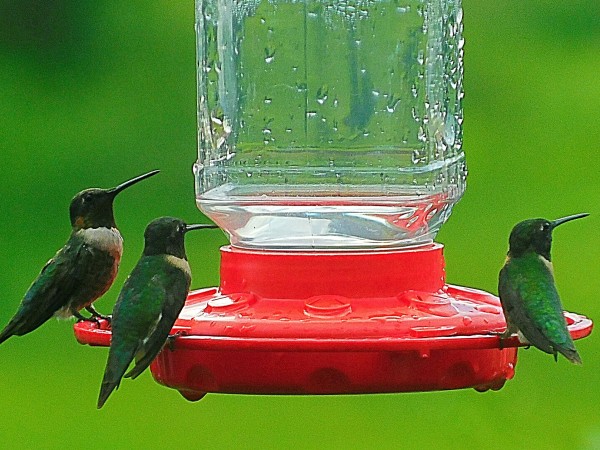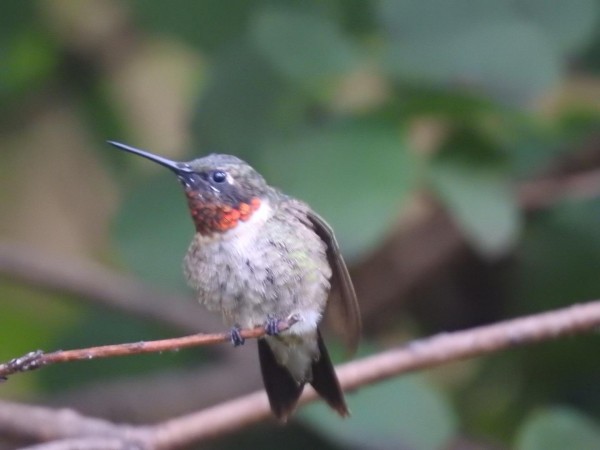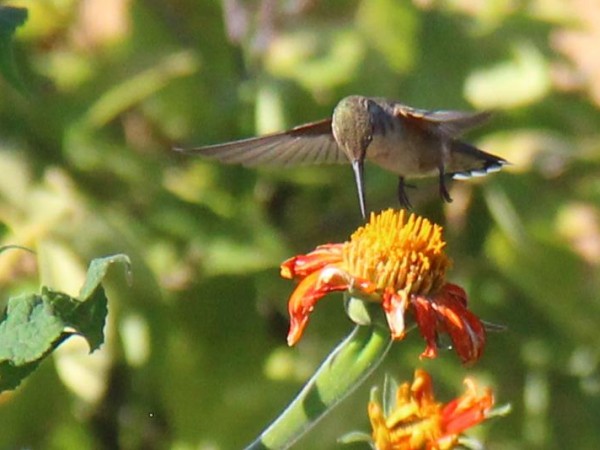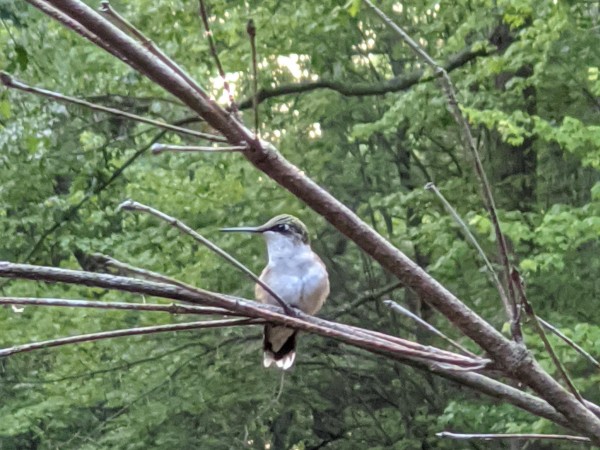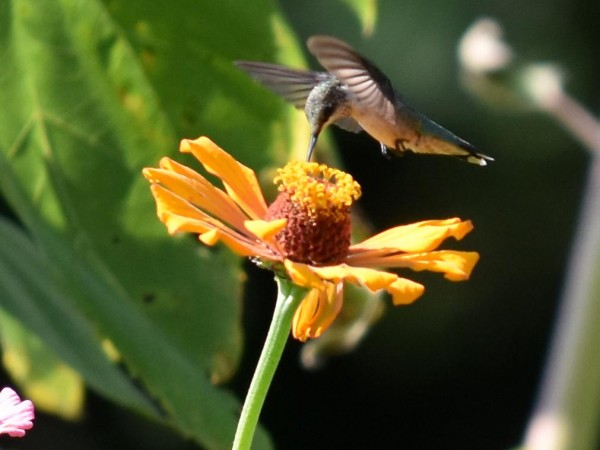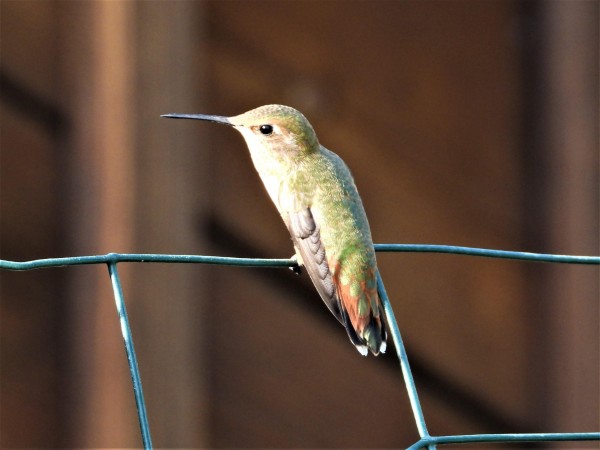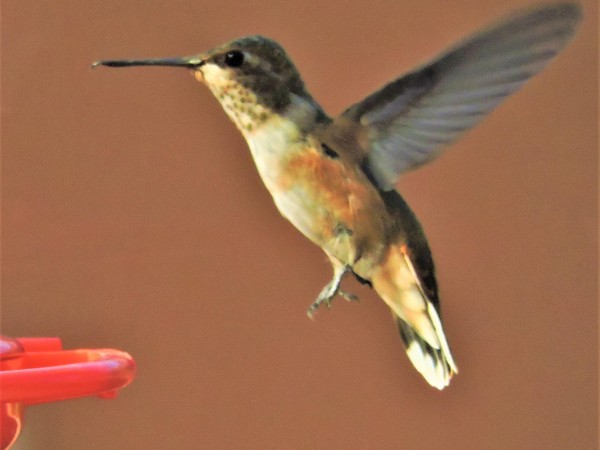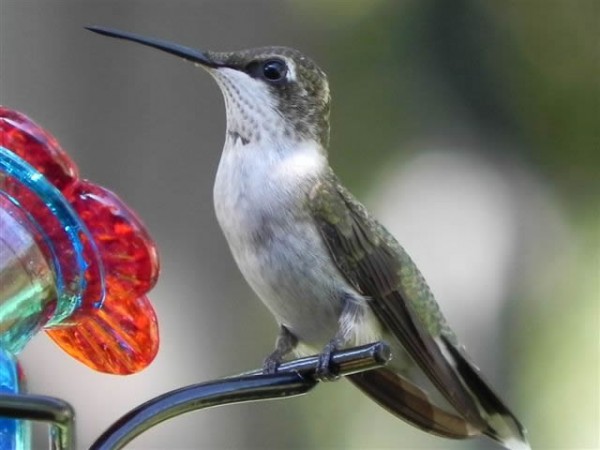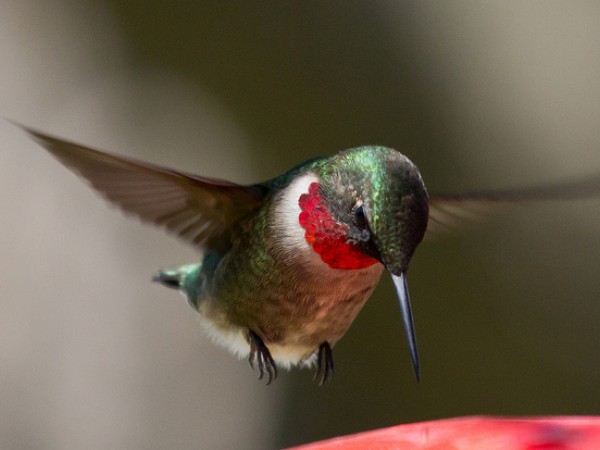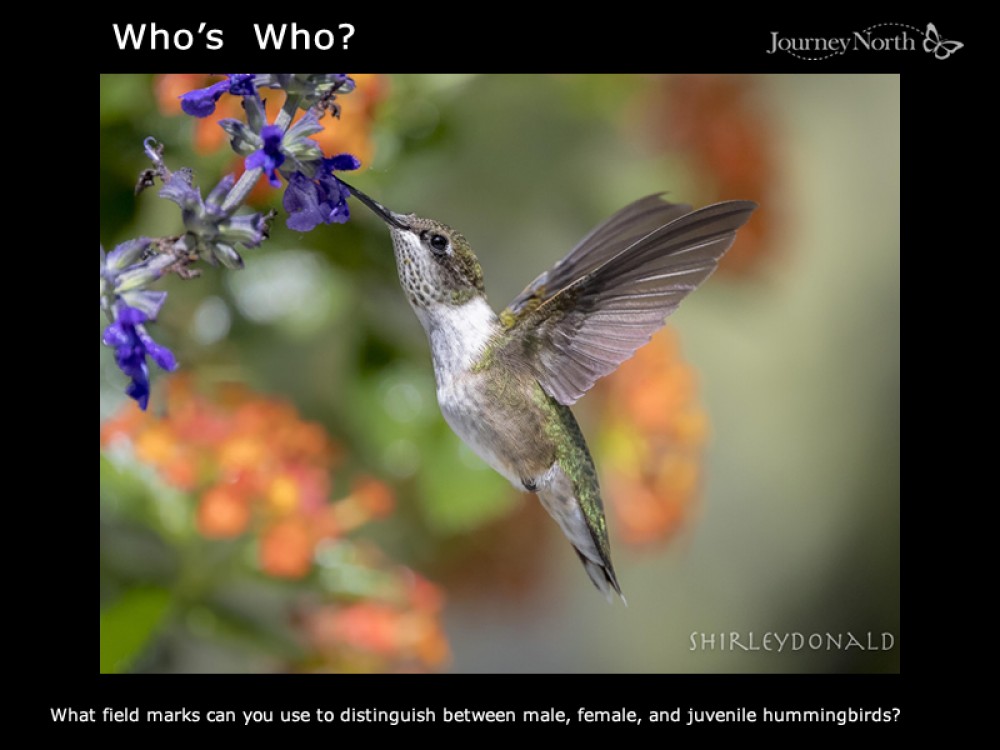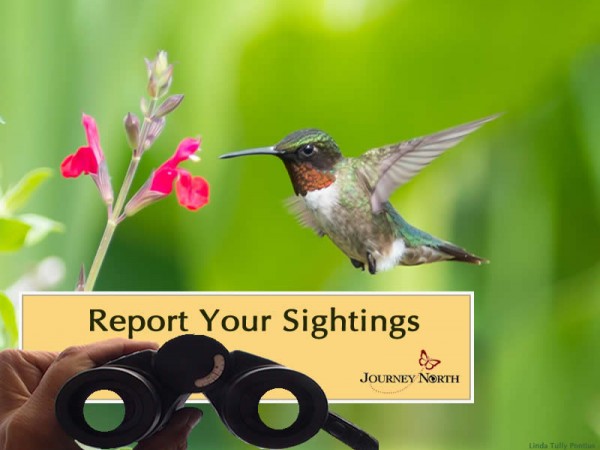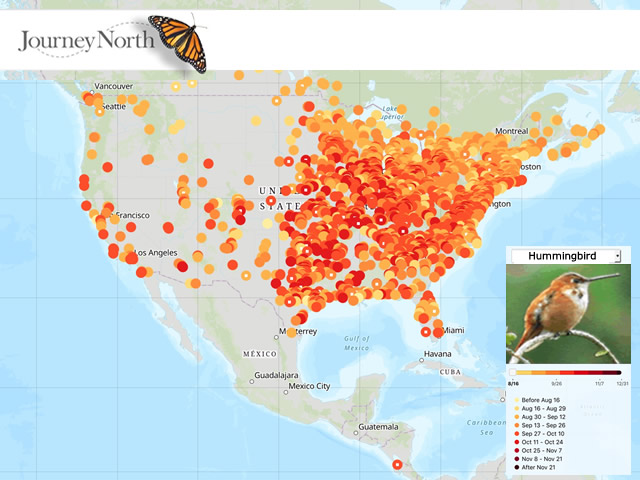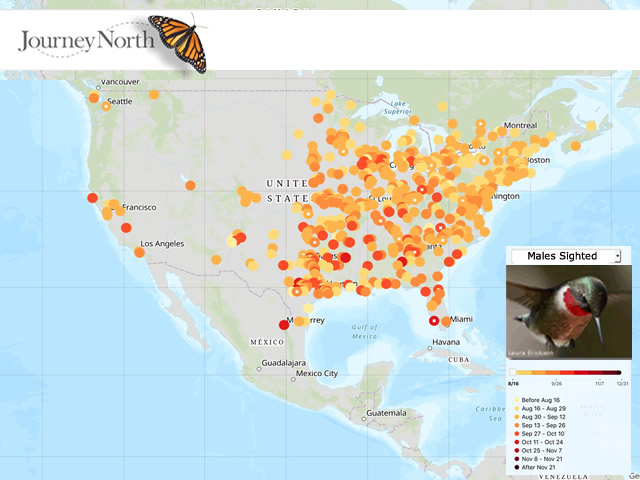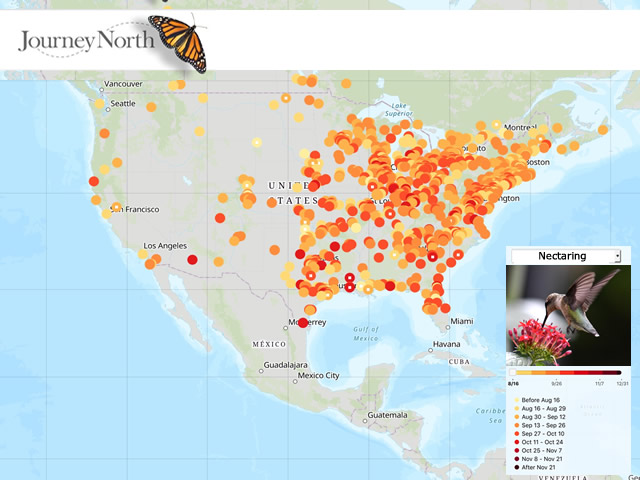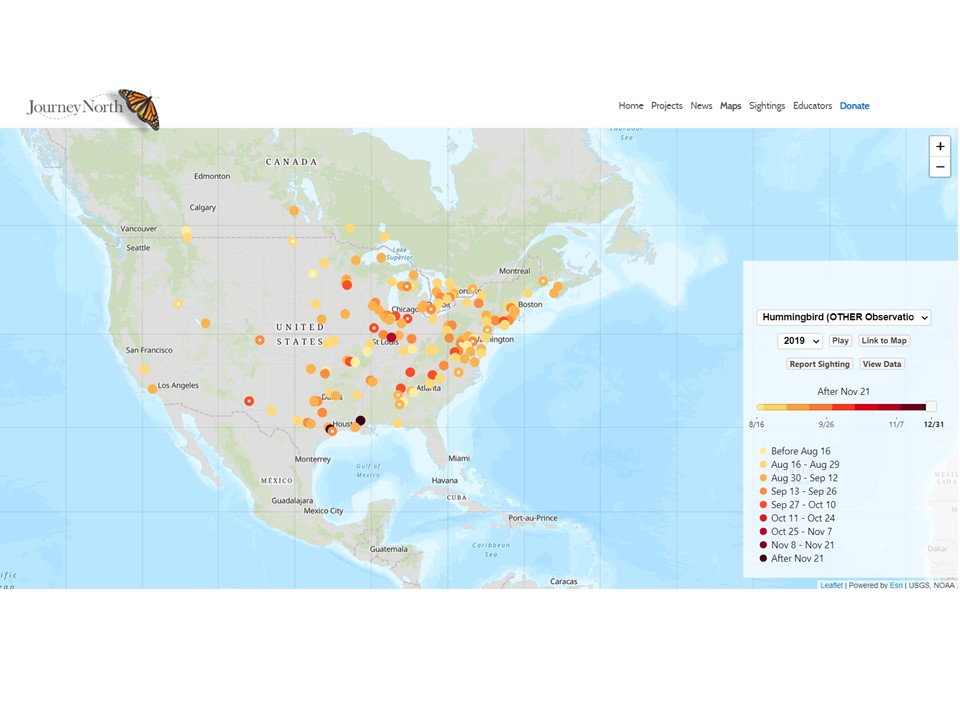Fueling Up for a Long Journey
Fall migration is picking up steam as male hummingbirds head south and reports of feeding frenzies start to come in.
Males on the Move
Throughout the northern reaches of the United States and parts of Canada, sightings of adult male hummingbirds are becoming few and far between. Males migrate first, followed by females and juveniles. Early male departure is actually beneficial to females and juveniles: with males gone, females and juveniles can feed without competing for food with the larger, more territorial males. This allows juveniles to prepare for migration. Newly-fledged birds need the time to mature and gain fat reserves before flying off on their first migration south.
Ruby-throated Hummingbird numbers are starting to swell in the southern United States as migratory males and long-term summer residents overlap and compete for resources.
Kathy in Morris Chapel, TN: "Just a few of the adult male Ruby-Throated Hummingbirds sharing a feeder." (08/26/2020)
Emily in California, MO: "3 male hummingbirds guarding 3 different feeders." (08/19/2020)
Further north and into Canada, Journey North citizen scientists are reporting high numbers of females and juveniles, as male sightings continue to drop off. As a reminder, you can report males under the category: Fall: Hummingbird Sighting (Adult Male). We are hoping for more reports of adult males to better determine "last seen" dates.
Out west, Rufous Hummingbirds are passing through for a just a few days before continuing their journey south.
More Sightings:
Ruby-throated Hummingbird:
John in Lethbridge, AB: "Some hummers present throughout the day. Two at the same time chasing each other around." (08/18/2020)
Tilly in Sanford, MI: "As August begins to move towards September our habitat is filled with activity. During the day and this evening there were hummingbirds playing tag, soaring, and landing almost anywhere one looked. The flowering dogwood tree is a favorite place to play, rest." (08/23/2020)
Kim in Henderson, KY: "4 to 6 hummers for past the 2 weeks fighting over 4 feeders in the backyard. 2 male Ruby-throats, 1 female and 1 juvenile. Very active feeding on zinnias, sunflowers and trumpet vine." (08/22/2020
Rufous Hummingbird:
Aileen in Nisland, SD: "Rufous Hummingbird. We saw 1 hummingbird last year so this is a rare sighting for our area." (08/17/2020)
Carla in Ivins, UT: "Second male Rufous of the season heading south. First was about two weeks ago." (08/20/2020)
Other hummingbird species not specified:
Emily in Ruidoso, NM: " Scads of hummers at our four feeders! A frenzy just after daybreak and right at sunset." (08/19/2020)
Nectar Sources: Late Summer and Early Fall
While on migration, hummingbirds need a steady supply of food to fuel their flight. Finding nectar sources can mean the difference between life and death. Here are some steps you can take to help:
- Continue to maintain your hummingbird feeders until temperatures drop below freezing.
- Continue to nurture your pollinator gardens. Next year, consider planting brightly-colored native flowers with long tube shapes. Remember hummingbirds are attracted to the bright colors, not smell. Follow this link for a few planting suggestions: Photo Gallery of Fall Nectar Sources
- Support the preservation and restoration of native habitats that are favorable to both migrating and resident birds.
Please remember to report when you see hummingbirds nectaring from flowers. When possible, please provide the name of the nectar rich plant. As a reminder, report these observations under the category: Fall: Hummingbird, Nectaring from Flower.
Keep Reporting
Start reporting now and continue to report until you see your last hummingbirds of the season. Fall migration is here!
Fall Migration 2020
Report at least once per week as long as hummingbirds are present. Do not report when you no longer see them.


